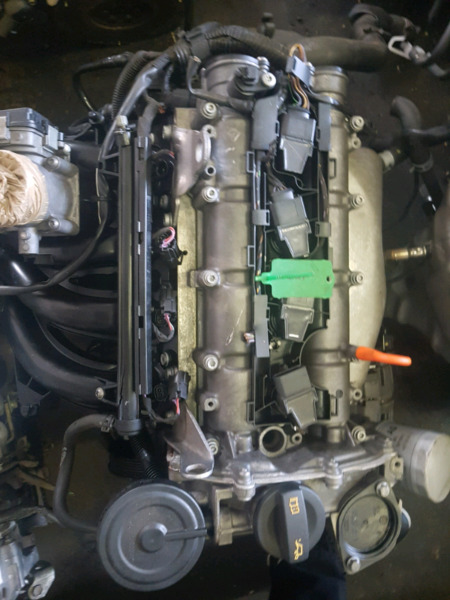Extend the lifespan of your clp engine with regular care.
Extend the lifespan of your clp engine with regular care.
Blog Article
Just How a Clp Engine Can Enhance Performance in Numerous Industries
The introduction of CLP engines notes a substantial change in operational performance throughout various markets, driven by their capability to maximize gas intake and minimize downtime. As organizations progressively focus on sustainability alongside performance, the role of CLP engines comes to be also extra vital.
Introduction of CLP Engines
CLP engines, or Continuous Liquid Propellant engines, stand for a significant improvement in propulsion modern technology, specifically for area applications. These engines use a constant feed system that permits for the continual expulsion of propellant, resulting in improved effectiveness and efficiency compared to traditional solid or hybrid propulsion systems. By maintaining a continuous circulation of liquid propellant, CLP engines can achieve a lot more exact thrust control, which is essential for steering spacecraft in numerous objective situations.
The design of CLP engines integrates advanced materials and ingenious gas monitoring systems. clp engine. This results in reduced weight and enhanced integrity, essential aspects for long-duration room objectives. In addition, the continual operation minimizes the risk of burning instability, an usual difficulty in conventional rocket engines.

Benefits in Production
The manufacturing of Continual Liquid Propellant (CLP) engines offers several remarkable benefits that boost both performance and cost-effectiveness. Among the main benefits is the structured manufacturing process, which reduces the complexity connected with conventional propulsion systems. By utilizing fluid propellant, makers can accomplish higher accuracy in engine performance, bring about maximized power output and reduced waste.
Furthermore, CLP engines assist in a higher level of modularity, enabling much easier integration into different manufacturing lines. This adaptability can considerably reduce preparations and boost overall operational versatility. The use of CLP innovation likewise often tends to reduce the need for extensive maintenance because of less relocating components, which converts right into lowered downtime and operational prices.

Applications in Logistics
Leveraging Continual Liquid Propellant (CLP) engines in logistics supplies significant advantages in operational efficiency and dependability. These engines supply a robust remedy for different transport needs, allowing the smooth motion of products across substantial distances. The fundamental design of CLP engines enables consistent power outcome, which equates right into smoother and more foreseeable transportation routines.
Among the essential applications of CLP engines in logistics remains in heavy-duty products transport, where they can drive both ground and aerial lorries. Their ability to maintain high efficiency under differing tons conditions ensures that shipment timelines are fulfilled, consequently improving client fulfillment. Additionally, CLP engines can be integrated into automated logistics systems, facilitating real-time tracking and optimizing path preparation.
Additionally, the longevity of CLP engines decreases maintenance downtime, enabling logistics business to maximize their operational abilities. This is you could look here specifically advantageous in warehousing procedures, where performance in dealing with and delivering items is critical. As logistics continues to evolve, the integration of CLP engines represents a forward-thinking method that not just enhances performance yet additionally sustains the industry's expanding needs for reliability and speed.
Influence On Energy Efficiency
Exactly How do Continuous Fluid Propellant (CLP) engines improve energy efficiency in transportation? CLP engines make use of a consistent flow of liquid fuel, maximizing combustion procedures and keeping a secure thrust outcome. This design reduces power losses linked with standard burning engines, where fuel distribution can vary and lead to inadequacies.
The continual procedure of CLP engines enables a more efficient thermal cycle, resulting in greater specific impulse compared to conventional engines. clp engine. This converts to minimized fuel intake for the same quantity of work done, considerably lowering functional costs across different transport markets, consisting of aviation and maritime markets
In addition, the ability of CLP engines to keep optimum performance under differing tons conditions decreases the requirement for frequent acceleration and deceleration, even more boosting gas effectiveness. Enhanced power efficiency not just adds to set you back savings but also brings about lower greenhouse gas exhausts, aligning with international sustainability objectives.
Future Trends and Innovations
Arising developments in Continuous Liquid Propellant (CLP) engine technology guarantee to revolutionize the landscape of transportation efficiency and sustainability. As sectors pivot towards greener options, CLP engines stand at the forefront, incorporating ingenious materials and style methods that boost performance while lessening environmental impact.
One of one of the most appealing patterns is the fostering of crossbreed systems that integrate CLP engines with renewable resource sources. This harmony can enhance gas intake and reduce discharges, lining up with international sustainability objectives. Moreover, innovations in computational liquid dynamics (CFD) are assisting in the design of more aerodynamically effective engines, leading to lowered drag and boosted fuel efficiency.
Furthermore, the development of wise monitoring systems is readied to improve operational performances. These systems take advantage of data analytics and IoT technology to optimize engine see this here efficiency in real-time, making sure that the engines operate within their most efficient specifications.
As research continues to check out alternative propellant formulations-- such as biofuels and synthetic fuels-- the future of CLP engines looks appealing. By using these innovations, sectors can not just boost their performance but also contribute considerably to a cleaner, a lot more sustainable future in transport.
Verdict
In verdict, CLP engines represent a considerable innovation in performance across multiple sectors. The combination of sophisticated materials and fewer relocating components reduces maintenance needs, while a fantastic read alignment with sustainability goals settings CLP engines as a pivotal innovation for the future.
Report this page